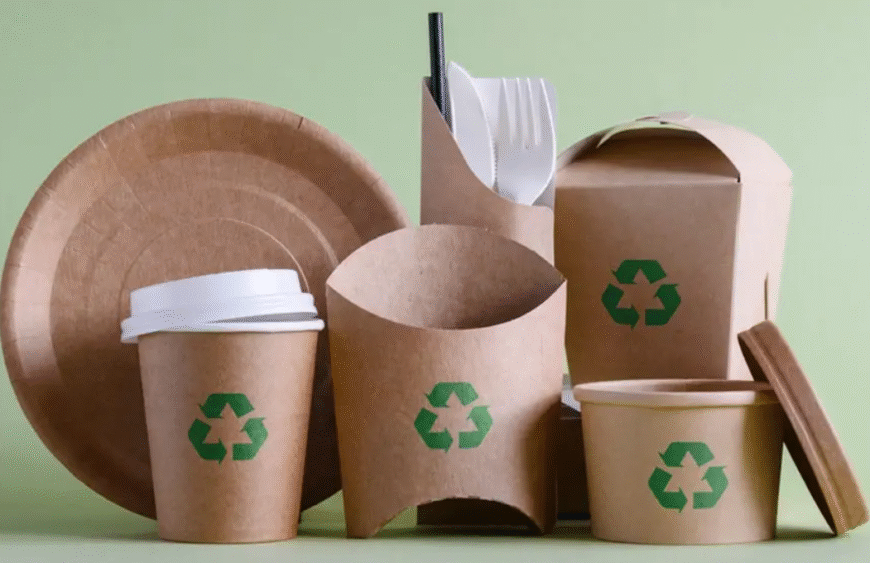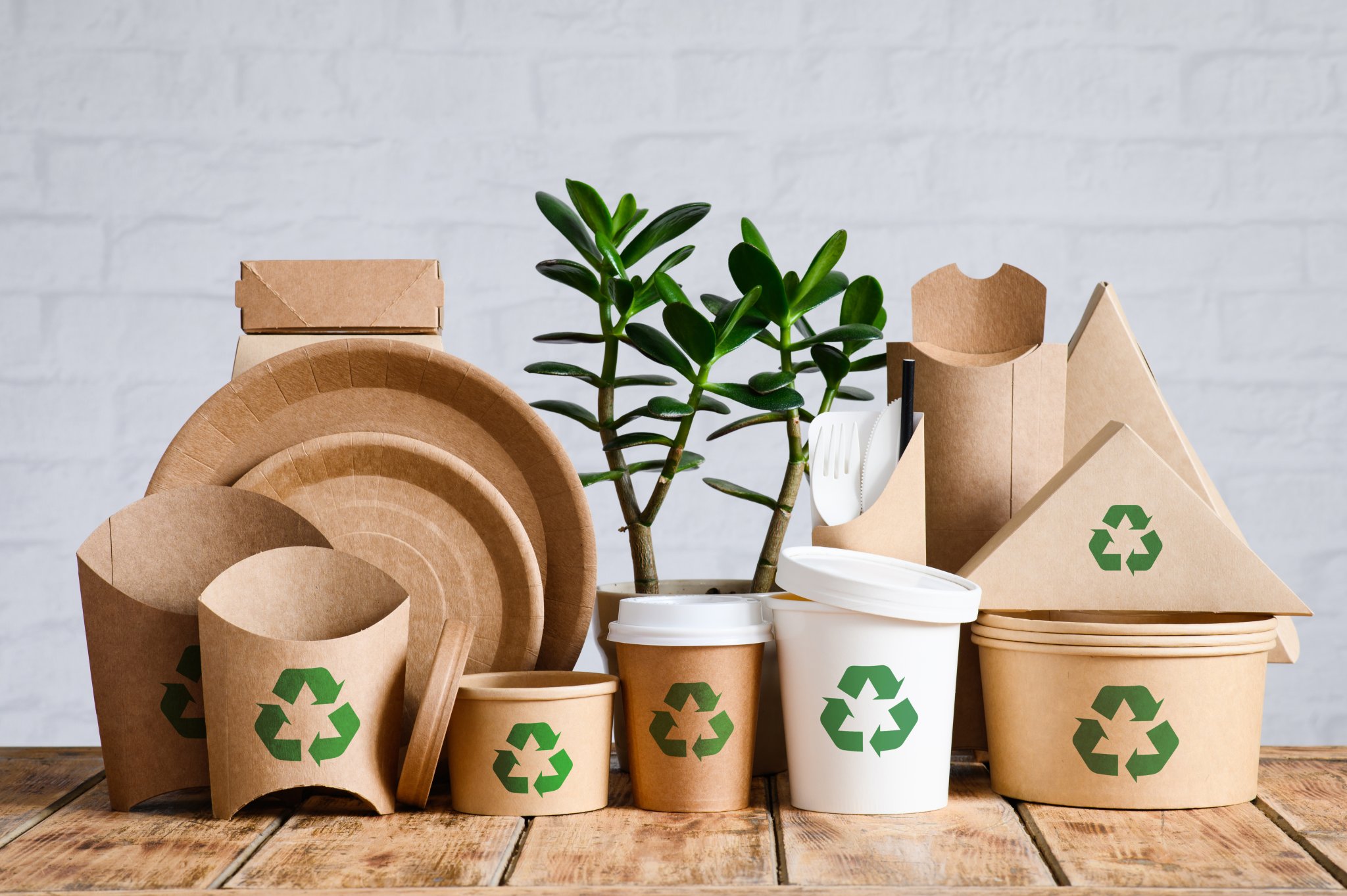The increased level of packaging waste has created an obvious and immediate environmental dilemma on a global scale. Recycling has been marketed as one of the leading solutions for many years now.
Nonetheless, zero-waste packaging, a more basic and ambitious approach to this problem, is becoming increasingly popular. This idea goes beyond the simple waste management issue. It argues for a systemic re-design in which packaging is imagined, employed, and disposed of.
Zero-waste packaging is an ecological dream, a passing trend, and an innovative and necessary rethinking of material lifecycles. The basic goal is to create systems where materials used for packaging cannot become “waste” in the conventional sense. Instead, they are safely retained in the loop or recycled to the biosphere.
This detailed guide provides a systematic analysis of zero-waste packaging, its different forms, and the benefits it carries.

What is Zero Waste Packaging
Although recycling is essential in handling resources, real zero waste packages represent a more expansive and preventive approach.
According to the Zero Waste International Alliance (ZWIA), the common definition is;
”The Conservation of all resources through responsible production, consumption, reuse, and recovery of products, packaging, and materials without burning and with no discharges to land, water, or air that threaten the environment or human health. ”
In such a system, there is no direct disposal path for a one-time allocation of materials. Instead, they are designed and managed as conservatively as possible for as long as possible within the economic cycle at maximum value.
This requires a significant focus on “upstream thinking”—the proactive elimination of the potential for waste in products and packaging from the start of the design process. The final objective is to eliminate packaging waste destined for landfills, incinerators, and polluting natural environments.
Exploring Different Zero Waste Packaging Approaches
Zero waste packaging includes many strategies and material innovations for various products and settings. There are multiple models that businesses/consumers can approach in this regard.
The Use of Reusable and Refillable Systems
An effective strategy includes using reusable and refillable systems. This solution emphasizes designing a package for several use cycles.
Programs where consumers return containers at a point of sale or a central facility for rewash and refill are perfect examples, as are retail environments where customers may use their containers to dispense products from dispensers.
This model transforms the packaging paradigm from singular use and disposability to long-term utility, increasing shared responsibility between business enterprises and consumers.
The Use of Compostable and Biodegradable Materials
The usage of compostable and biodegradable materials serves another major outlet. Such materials, which are frequently sourced from plant-based ingredients like cornstarch, sugarcane bagasse, or mycelium, are designed to degrade into their natural elements upon exposure to certain environmental conditions.
It is important to differentiate: Materials that are “compostable” normally need the conditions of an industrial composting facility for their efficient breakdown, but some are certified for home composting.
The definition of biodegradable is broader and can often be inaccurate if the time to degrade is too long. When well-managed and appropriately managed in facilities, these materials can divert large volumes of organic-compatible packaging from landfills.
Benefits of Zero Waste Packaging
The drive towards zero-waste packaging is powered by multiple powerful benefits that permeate the environmental, economic, and societal spheres.
Environmental Imperative
The environmental imperative may be the most popular benefit. Adopting zero-waste principles helps significantly reduce the quantities of materials shipped off to overcrowded landfills, which are always sources of land and water pollution and greenhouse gases.
It also regulates the horrifying movement of plastic and other lasting debris into marine environments and preserves biodiversity. This method reduces products’ carbon footprint by decreasing the reliance on virgin resource extraction and energy-consuming manufacturing of the new packaging.
Such outcomes are necessary for larger projects to resolve global climate change and environmental degradation issues.
Economic Benefits
In business terms, the logic behind introducing zero-waste packaging is becoming more convincing. Although initial investments in new materials or system building could be required, economic benefits could be realized in the long run.
These can range from reduced raw material purchases to cheaper waste disposal charges and opportunities for generating new revenue streams. Refill services or take-back structures will be available.
Customer Loyalty
Strategically, there has been a major increase in building a positive brand image and creating customer loyalty through a commitment to sustainable packaging. An increasing number of consumers seek out and back truly environmentally responsible brands.
Therefore, leadership in zero waste practices has the potential to be a powerful market differentiator.
Strengthening Regulations
Furthermore, preventative implementation prepares businesses to adapt to and comply with strengthening regulations and Extended Producer Responsibility (EPR) enactment worldwide regarding stricter packaging waste reduction regulations.
Zero waste often triggers innovation in materials science, product design, packaging engineering, and logistics.
Greater Community
The development at the community level of local systems for reuse, repurposing, shared use, and organic composting could encourage local economic activities and facilitate the creation of “green” jobs.
Challenges on the Road to Zero Waste
The shift towards zero-waste packaging may not be the best option.
High Investment
Some of these business costs, such as sourcing new green materials, can carry high upfront investment costs and, in some cases, can be more expensive than traditional substitutes, retrofitting production lines, or redesigning packaging to accommodate new formats or systems.
For reusable packaging models, the institutions of organization of reverse logistics systems can be logistically burdensome and may require new infrastructure or partnerships.
Consumer Behaviour
Consumer behaviour change and education are other important factors. Decades of single-use convenience that outweighs convenience have made models that require active consumer involvement highly dependent on effective communication, convenient choices, and incentives to propagate a large-scale use with the desired level of effectiveness.
Limitations in Performance
In addition, certain alternative materials may have limitations in performance compared to conventional plastics in such areas as barrier properties, durability for some uses, or shelf life extension for sensitive products.
Complexity of Global Supply Chains
Ongoing innovations in materials science are rectifying these limitations, while product safety and integrity are still the top priorities. The complexity of global supply chains may make it challenging to consistently source sustainable materials even at scale and verify their environmental credentials.
The End-of-life Management
Finally, the absence of standardized available infrastructure worldwide for industrial composting or advanced chemical recycling of specific materials limits the end-of-life management of some innovative packaging types in many regions.
Conclusion
Zero-waste packaging is a significant paradigm shift in how people use material resources, consume materials, and manage the environment. It is a shift towards a circular system that values resources and tries to completely extinguish the concept of waste in packaging.
This journey requires systemic change, including innovation in design, stakeholders’ commitment, active consumers, and supportive frameworks from policymakers.
Despite implementation weaknesses, the manifold benefits of zero-waste packaging, i.e., a healthier planet, more resilient businesses, and more mindful consumption patterns, are profound and more keenly appreciated in their importance to a future worth living.







